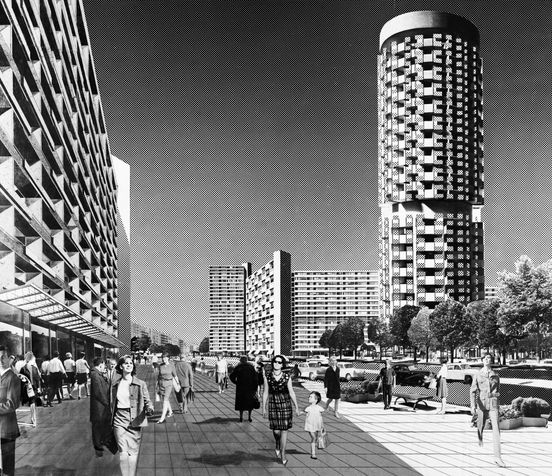To present important planned projects in a way that was easily understandable and convincing, several architects in the post-war era turned to techniques familiar from the worlds of art and advertising. By cutting, combining, and pasting photographs and found materials, they produced images of designs that were supposed to be realistic. The goal was to obtain approval for building projects by means of appealing illustrations.
The original work was pasted together. Traces of its making and the diversity of its materials are still recognisable here (collage). Because it was intended to be copied and disseminated using media, however, its contours, cut edges and retouching blurred visually into a new scene that looks uniform (montage). The printed result becomes the ‘original’. These days, computer-aided design (CAD) replaces this arduous manual method.
Artistically ambitious architects also used cinematic means to present their projects. They edited audio and video materials and combined them into a lively narrative. They, too, used the montage technique.
